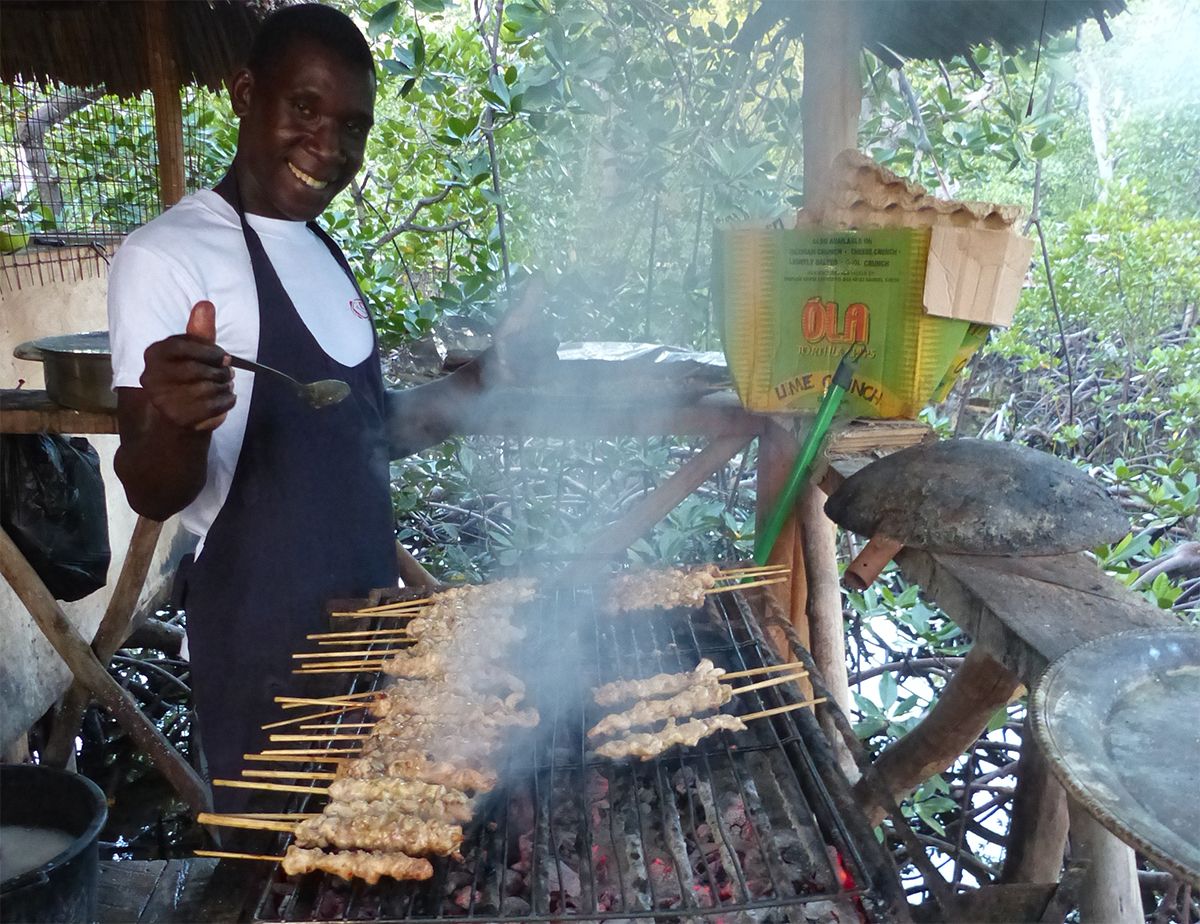
TOURISM
14-01-2023 by Freddie del Curatolo

In recent years, food tourism has grown considerably worldwide.
This is due to the popularity of certain programmes such as Hell's Kitchen and personalities such as the late Anthony Bourdain, who combined the pleasure of eating and drinking with the traditional cuisines of each country visited and consequently to trips to discover people and territories and also to the media coverage of dishes and related restaurants, especially in the context of social networks.
So also in Kenya tourists are discovering the local cuisine, especially the Swahili cuisine of the coast, which for culture and mixes has many flavors, recipes and surprises to offer.
In the last two years it is easy to see how on the coast of Kenya there have been many events that have as their focus tastings or culinary proposals. Street food" has evolved and even if it's a matter of dishes to be eaten on the fly, it's nice to see the banquets by the side of the streets (as it hasn't been for long in Watamu in the evening along the street of the center) and new local restaurants that open and travel which is a pleasure.
The most striking case in Malindi is undoubtedly the Seafront, a Swahili restaurant in the Baobab area open for lunch and dinner and full more or less at all hours. With the technique of fast food, the Seafront (managed by Muslims so strictly without alcohol) offers dishes that are not only tasty but offer an overview of the cuisine of the coast of Kenya: coconut shrimp with sauteed rice, octopus stew, Swahili fish and the inevitable chapati, samosa and rice pilau.
Another reason for the success is the average spending in places like this: it is difficult to go out with a full stomach having spent more than 4 euros. As a drink, taste the tamarind juice and at the end of the meal the "black spiced tea", a tea with the addition of fragrant spices.
It is important that many international restaurants have decided to include in their menus also typical Kenyan dishes. Or that their chefs experiment with fusion cuisine, combining suggestions of the East with African food and treating the raw material of the Indian Ocean with marinades or combinations entirely European. In Malindi Baby Marrow offers many Swahili dishes, in Watamu chef Diego Tosi of Tamu Restaurant invites you to a journey of flavors, aromas and colors that spans multiple continents. An interesting fact is the attraction of Kenyan tourists themselves for Swahili cuisine. Although Malindi is recognized as the Italian enclave and consequently "pizzaland" and "pastaland", fish cooked in the traditional way, with coconut or mango sauces and a mix of spices and Indian dishes (curry, masala) revisited in African style are much sought after.
The growing interest in places of pleasure such as the Crab Shack of Dabaso in Watamu, run by crab breeders where you can enjoy the only samosa with their fresh pulp, or the more rustic "prawn lake" where instead the samosa are stuffed with shrimp, is significant. It is the young people, generally more the other Europeans than the Italians, who discover these corners where they can combine the gastronomic experience with the beauty of the least contaminated places possible.
Many tourists, especially those not of first coat and delicate stomach, go even further, in the kiosks and in the local taverns where it is the national dish, the "Nyama choma" (is nothing more than meat of adult cattle almost roasted on the grill) and the chicken are the masters, but some sautéed vegetables such as stewed cabbage (tradition mijikenda), mchicha and sukumawiki are the masters.
Here, unlike in the pro-Islamic taverns, you can also find beer, which is always a nice combination with certain foods. Needless to say, the "Tusker baridi sana" (the very cold local beer) is a pleasure, a relief and an ideal accompaniment. You can also enjoy it in combination with the street food you find at every corner, especially in Mombasa, Malindi and Lamu: "viazi karai" (potatoes mixed with lemon and pilipili), bajia (vegetable fritters), fried cassava (delicious), sesame focaccette and other delicacies.
For all the others, besides the mastercard, there is the good, classic international cuisine of "pizzaland" and its surroundings.
Translated with www.DeepL.com/Translator
by redazione

A month and a half of well-deserved holidays, and one of the landmarks of Italian and international catering in Malindi reopens its...
EVENTS
by redazione

Kicking off today is the 20th Lamu Cultural Festival, one of the most important events of its kind in Kenya...
PLACES
by redazione

Put a professional bartender, the most exclusive oasis of Watamu, two glasses on a table overlooking the ocean bay with breathtaking colors.
If it's also going to get the sunset after a day of sea, sun and fun, the cocktail...
TRADITIONAL FOOD
by Leni Frau

Kenya, thanks to past trade relations with Arabs, Indians and Persians, is a mix of cultures and traditions, of...
STREET FOOD
by Freddie del Curatolo

In the beginning was matumbo.
Kenyan food is almost always "street food", in the sense that it is cooked not only in public but at...
TERRITORY
by redazione

PLACES
by redazione

Two more hours of opening in the evening, with a curfew postponed to 9 p.m., for a restaurant means the...
EVENTS
by redazione

On Saturday 19 October, in the public area of the former Sinbad Hotel in Malindi, next to the Casino (where...
EVENTS
by redazione

The Italian Food and Culture Exhibition in Nairobi could not have a better location than the historical Sarova Stanley Hotel in the town center of the Kenyan capital.
RESTAURANTS
by redazione

Popular legends narrate that the Italian tricolor was not only...